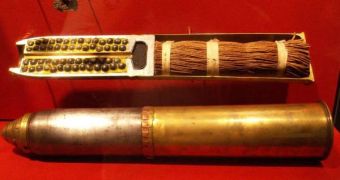Autonomous robots are no news flash, but one that can travel through flesh all on its own is. Duke University bioengineers created such a device in their laboratories, and the little machine is capable of navigating its own way through skin samples, find pieces of shrapnel, and guide a needle to their location, without ever having to turn to humans for help or guidance.
The robot seems to have a bright future in the field of medicine, as researchers have already decided that, in addition to using it on the battelfields of the future, to treat shrapnel wounds, they will also make it guide and place “radioactive” seeds. These medical instruments are small patches of radioactive substances, which are regularly used in the localized radiation treatment of prostate cancer, but also of other forms of the disease.
The robot's “eyes” make use of a special kind of 3D ultrasound technology, devised at Duke specifically for it. The brain on the machine is made up of an artificial intelligence program, and it's able to process all the information the eyes collect. In their experiments, the researchers used shrapnel and a needle, because of their potential to be influenced by magnetism. “We attached an electromagnet to our 3-D probe, which caused the shrapnel to vibrate just enough that its motion could be detected. Once the shrapnel's coordinates were established by the computer, it successfully guided a needle to the site of the shrapnel,” bioengineering undergraduate student A.J. Rogers, from the Duke University, explains.
“We showed that in principle, the system works. It can be very difficult using conventional means to detect small pieces of shrapnel, especially in the field. The military has an extensive program of exploring the use of surgical robots in the field, and this advance could play a role,” the Director of the Duke University Ultrasound Transducer Group, Stephen Smith, who has also been a senior researcher for the new study, adds. A paper detailing the find appears in advance in the online July issue of the scientific journal IEEE Transactions on Ultrasonics, Ferroelectrics and Frequency Control.

 14 DAY TRIAL //
14 DAY TRIAL //